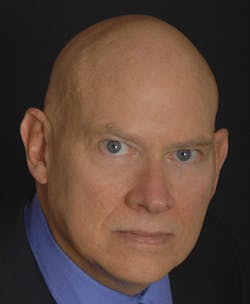► Campus shootings are not increasing. U.S. government studies show the number of incidents have held steady or decreased over the last two decades.
► Campus violence is workplace violence. Schools and colleges are workplaces before they are campuses.
► Workplace homicides are down dramatically over the last two decades.
► Workplace violence of all calibers except homicide are on the increase. Harassment to assault to robbery and rape are much more likely than homicide.
So how does “Run, Hide, Fight” add to this conversation?
Mother Mitchell always told me, “Bo, for every complex problem, there is a simple solution – that is always wrong.” Her wisdom applies here.
Should You Fight Back?
Police response has changed since Columbine. Police no longer wait for backup. They fight immediately to stop the carnage.
So should civilians fight shooters at work or at school? Not as a first step, and really almost never. Very few civilians have the training to successfully fight a shooter. But, as you will see, this gets complex.
"Run, hide, fight" has been the standard responses forever to workplace and campus violence, including shooters. Yet "run, hide, fight" is not a list of choices. It is a continuum of decision making for intended victims:
1. First, run: Police and experts always recommend that civilians get away from the perpetrator as the first and most effective way of achieving safety. Running is your first decision.
2. If running can’t work, then hide. Hiding is complex. Hiding can mean being out of sight in silence (cell phones off); it can mean locking doors and windows and/or covering windows; and it can include barricading doors. Complex stuff.
3. If running and hiding doesn’t work, then fight. Are you alone? What can be used as weapons? Will turning lights on or off be advantageous? Can you work together with others to fight?
This all amounts to some very complex decision-making. And the complexities abound for an employer writing and training procedures for all personnel, whether at work or school.
For instance, will an employer be held negligent for recommending that employees – unarmed and untrained in combat tactics – fight an active shooter who then kills one of those employees? Probably. Will a head of school be held negligent for telling staff to run and hide but not to fight, thereby leaving children exposed to an active shooter? Probably.
Yet in both scenarios, the employer might be applauded by a jury if fight responses were written and trained as last resorts after all else fails.
Emergency Insights
► Workplace (and campus) violence are foreseeable circumstances at every workplace in America without exception.
► The U.S. government has an array of studies on the ubiquity and severity of workplace violence. The CDC calls workplace violence “an epidemic.”
► This is complex stuff. Each employer, campus, corporation, medical facility, etc., needs site-specific procedures to respond to workplace violence and shall train those procedures to all employees.
► Employers should collaborate with local police, fire and EMS regarding planning, training, exercises and drills for workplace violence.
► No one can afford to ignore this or delay planning, training and drilling.
Let’s be careful out there.
Read the recent New York Times article about “Run, Hide, Fight," and EHS Today's four-part series on workplace violence.
About the Author
Bo Mitchell
President
Bo Mitchell, CEM, CPP, CHS-V, CBCP, CHSP, CHEP, CHCM, CSHM, CFC, CIPS, CSSM, CSC, CAS, TFCT3, CERT, CMC, is president of 911 Consulting. He can be reached at [email protected].


